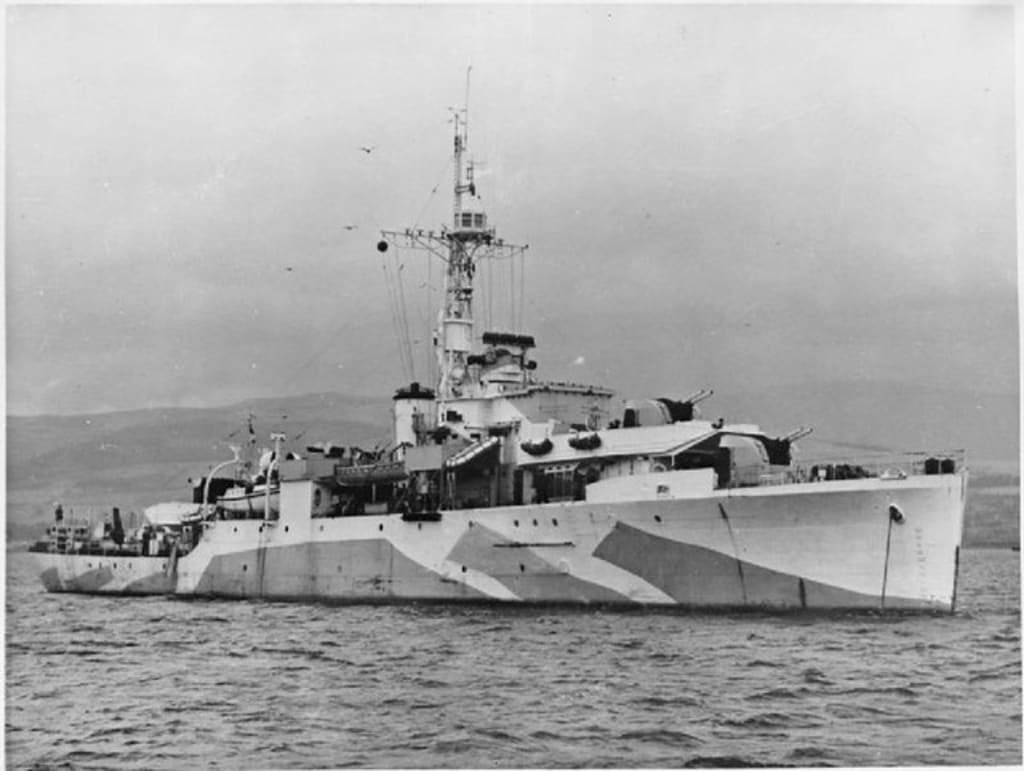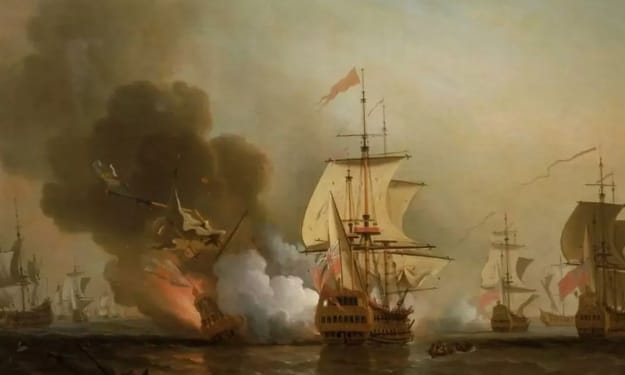
Introduction
Amidst the tumultuous backdrop of the Chinese Civil War, the Yangtze Incident, also known as the Amethyst Incident, unfolded in the summer of 1949, etching a pivotal mark in naval history. This defining moment involved the Royal Navy frigate HMS Amethyst, accompanied by HMS Consort, HMS London, and HMS Black Swan. This account delves into the intricate sequence of events that transpired during this compelling saga.
The Setting: A China Divided
As the Chinese Civil War raged between the Communist People's Liberation Army (PLA) and the Nationalist Kuomintang forces, the nation found itself deeply divided. In this tumultuous era, foreign powers, including Great Britain, maintained a cautious presence in China. The British Embassy in Nanking, then the Chinese capital, stood as a symbol of foreign influence amidst the political upheaval.
The Order: A Mission Up the Yangtze
On April 20, 1949, the Royal Navy issued orders for HMS Amethyst to undertake a significant mission: to navigate the Yangtze River from Shanghai to Nanking. The primary objective was to relieve HMS Consort, previously stationed as a protective guard for the British Embassy in Nanking. This mission, however, would soon take an unexpected turn.

The Beginning: A Journey Up the Yangtze
As mentioned above on the 20th of April 1949, the Royal Navy issued orders for the frigate HMS Amethyst to undertake a mission: to navigate the Yangtze River from Shanghai to Nanking. The primary objective was to relieve HMS Consort, previously stationed as a protective guard for the British Embassy in Nanking. Around 70 miles from Nanking, the vessel encountered hostile fire from Communist artillery batteries stationed on the river's northern bank.
Initially, a salvo of ten shells fell short, erroneously assumed by the ship's officers as a regular bombardment aimed at Nationalist forces on the southern bank. Consequently, the Amethyst continued its course towards Nanking, bolstering speed and displaying large Union flags draped over both sides of the ship.
However, as the frigate approached Kiangyin (now Jiangyin) further upstream, it faced sustained fire from a second People’s Liberation Army (PLA) battery. The PLA seemingly perceived the vessel's approach as a breach of the warned war zone. The next salvo of shells found its mark on the Amethyst, plunging it into chaos and causing it to run aground in an attempt to evade the shelling. Tragically, this incident led to the loss of 17 crew members, with 10 more sustaining injuries, including the captain, Lieutenant Commander Bernard Skinner, who succumbed to his wounds later.

Interlude: Relief Attempts and the Battle
As HMS Amethyst grappled with its predicament, trapped on the Yangtze River after facing intense fire, the Royal Navy swiftly responded to extricate their stranded vessel. HMS Consort spearheaded the initial rescue mission. However, as it steamed towards the beleaguered Amethyst, it encountered formidable opposition. The Consort came under heavy fire from the People's Liberation Army (PLA) batteries, sustaining significant damage and casualties, and compelling a harrowing retreat.
Subsequent attempts by HMS London and HMS Black Swan to aid the distressed Amethyst faced similar vehement resistance from the PLA artillery, thwarting their efforts and escalating the tense situation.
The PLA's unyielding attacks transformed the rescue attempts into intense battles, leaving the vessels battered and unable to breach the PLA's fortified positions. These skirmishes underscored the formidable challenge posed by the PLA's staunch defence along the Yangtze, further complicating the already precarious circumstances surrounding the trapped Amethyst.
The Standoff: A Test of Resilience
Following the initial attack that left HMS Amethyst marooned on a mud bank in the Yangtze River, the crew found themselves thrust into an unexpected and lengthy standoff with the People's Liberation Army (PLA). This standoff spanned three gruelling months, marked by perilous uncertainty and diplomatic entanglements.
The PLA, having perceived the Amethyst's presence as a violation of Chinese territorial waters, imposed a strict blockade, preventing any movement along the river. HMS Amethyst, severely incapacitated by the attack, became a sitting target, constantly under threat from the PLA's artillery batteries along the riverbanks.
Throughout this trying period, the crew of the Amethyst demonstrated remarkable resilience in the face of adversity. They tirelessly worked to maintain the ship's operations, repairing damage and preparing for a potential escape. Despite the constant threat from PLA forces and the scarcity of supplies, the crew's morale remained high.
Negotiations between the British government and the PLA proved to be a protracted and challenging endeavour. The PLA demanded an acknowledgement of wrongdoing, an apology, and reparations for the breach of Chinese waters. The British government, however, refused to concede to these demands, maintaining that the Amethyst was operating within the rights of international maritime law.
The impasse intensified the strain on both the crew of the Amethyst and the diplomatic relations between China and the United Kingdom. The crew faced mounting pressure, their physical and mental well-being strained by the prolonged standoff. The British government, determined to uphold its principles, sought a diplomatic solution while preparing for potential military action.

The Escape: A Daring Nighttime Dash
After enduring three arduous months stranded, HMS Amethyst seized a fleeting chance for escape on the night of July 30, 1949. Under the cloak of darkness, the crew carefully prepared for their daring operation. They muffled the ship's engines and removed all unnecessary lights, hoping to remain undetected by the PLA's vigilant watch.
As the Amethyst slipped its cable and silently descended the Yangtze River, the PLA forces quickly detected the escaping vessel. A barrage of artillery fire erupted, illuminating the river with flashes of light and explosions. Amidst the chaos, the Amethyst skillfully manoeuvred through the narrow channel, evading the relentless shelling.
Lieutenant Commander Kerans, who had assumed command of the Amethyst after the initial attack, displayed exceptional leadership during the escape. His calm and decisive actions inspired the crew, who worked tirelessly to maintain the ship's speed and evasive manoeuvres.
Despite the intense bombardment, the Amethyst managed to navigate the treacherous waters of the Yangtze River, leaving the PLA artillery batteries far behind. As dawn approached, the ship reached the open sea, signalling an end to the perilous ordeal.
The crew's jubilant spirits soared upon reaching Hong Kong on July 31, 1949. They were hailed as heroes, and their bravery and resilience were celebrated throughout the country. The Yangtze Incident concluded with the Amethyst's triumphant escape, leaving behind a legacy of courage, determination, and the unwavering spirit of the Royal Navy.
The Legacy: A Tale of Courage and Diplomacy
The Yangtze Incident, etched in the annals of naval history, stands as a testament to the courage and resilience of the Royal Navy crew aboard HMS Amethyst. Their unwavering determination amidst insurmountable odds exemplified the spirit of service and sacrifice that defines the armed forces.
The incident, however, extended beyond the confines of the Yangtze River, reverberating into the realm of international relations. The diplomatic standoff between the British government and the People's Liberation Army (PLA) highlighted the complexities of navigating international waters amidst political tensions.
The Amethyst's daring escape, while a triumph of seamanship and bravery, also underscored the delicate balance between upholding international maritime law and respecting territorial sovereignty. The incident served as a stark reminder of the potential for conflict when these principles clash.
The Yangtze Incident, with its blend of human drama, political intrigue, and naval prowess, remains a captivating chapter in history. It serves as a reminder of the challenges and perils faced by those who navigate the world's waterways, upholding the values of freedom and the rule of law.
About the Creator
Richard Clements
Unearthing the Mysteries of History, Crime, and the Unknown
Delve into the captivating world of history, crime, and mystery through factual writing. Explore the past, unravel human behavior, and solve enigmas.
Enjoyed the story? Support the Creator.
Subscribe for free to receive all their stories in your feed. You could also pledge your support or give them a one-off tip, letting them know you appreciate their work.






Comments
There are no comments for this story
Be the first to respond and start the conversation.